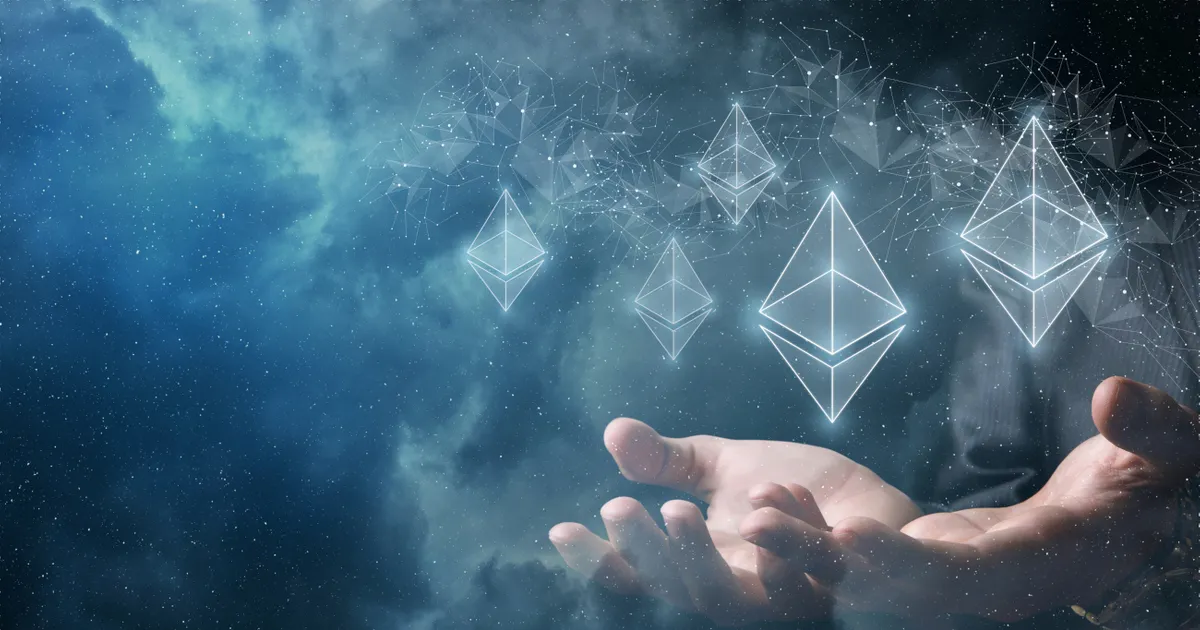Ethereum, often mentioned alongside Bitcoin, is a name that has come a long way since its forum days. The conversations about its flagship cryptocurrency and it’s popular open-source apps have gone from Silicon Valley water coolers to the front-page in short order. Some still don’t believe, while others tout Ethereum as the blockchain of the future. Either way, it’s about time to learn more. Today, we’ll walk you through all things Etherium, from how it started to where it might be headed.
 Shutterstock: Natali _ Mis
Shutterstock: Natali _ MisThe Genesis of Ethereum
In 2013, a young programmer named Vitalik Buterin proposed Ethereum as an evolution of the blockchain technology that powers Bitcoin.1 More than just another currency, Ethereum was a bold step towards revolutionizing blockchain’s utility. Envisioned as a platform for decentralized applications (DApps), Ethereum sought to do what Bitcoin couldn’t.
The idea was not just to facilitate peer-to-peer transactions, but to provide a playground for developers worldwide to create decentralized platforms. By 2015, this vision materialized, making waves in the blockchain community and setting the stage for a myriad of decentralized innovations.
Beyond Cryptocurrency
While Bitcoin is often associated solely with digital currency, Ethereum’s scope goes beyond this. Ethereum introduced the concept of “smart contracts,” self-executing contracts with the terms of the agreement between buyer and seller being directly written into lines of code.2
These contracts automatically enact transactions when predetermined conditions are met, without the need for intermediaries. This has the potential to revolutionize industries, from real estate to entertainment, by making transactions more transparent, secure, and efficient.
Ether – The Fuel of Ethereum
At the heart of Ethereum is its native cryptocurrency, Ether (ETH). However, Ether serves a dual purpose. It acts both as a digital currency like Bitcoin and as “fuel” for executing smart contracts and running DApps on the Ethereum platform. When you hear about people “paying gas fees,” they’re referring to the costs associated with performing these operations on the Ethereum network, paid in Ether.3
Decentralized Apps (DApps) – A New Frontier
DApps are applications that run on the Ethereum blockchain. They benefit from the decentralized nature of the network, meaning they aren’t controlled by a single entity. This decentralization offers numerous advantages: reduced risks of censorship, increased resilience against infrastructure failures, and heightened security against hacking. Popular DApps range from decentralized finance (DeFi) platforms to gaming and art marketplaces.
Ethereum 2.0 – The Future is Bright
Ethereum, in its quest for innovation, is undergoing significant upgrades. Termed Ethereum 2.0, this new version aims to increase the speed, efficiency, and scalability of the network.3
Central to this transformation is the shift from a proof-of-work (PoW) consensus mechanism to proof-of-stake (PoS), making the platform more sustainable and environmentally friendly.
Potential Concerns
Despite its promise, Ethereum is not without challenges. Scalability issues have led to congestion and high transaction fees during peak times. The decentralized nature of DApps means they can sometimes operate in regulatory grey areas, causing concerns for traditional institutions. Still, many believe that the benefits far outweigh the challenges, and with continuous upgrades, the platform is steadily addressing its oft-discussed pain points.
The Role of ERC Tokens
Ethereum introduced the concept of ERC (Ethereum Request for Comment) tokens, primarily the ERC-20 and ERC-721. These tokens allow for the creation of new cryptocurrencies on the Ethereum platform.4
ERC-20 tokens have standardized functions, which means that they can be easily exchanged for one another. On the other hand, ERC-721 tokens are unique, representing ownership of a specific item or piece of content, popularly used in collectibles and digital art.
Environmental Considerations and Ethereum
Ethereum’s energy consumption, especially in its proof-of-work phase, has been a topic of considerable debate. Mining, the process used to validate transactions and create new blocks in the Ethereum blockchain, traditionally consumed significant energy. However, with the transition to Ethereum 2.0 and its proof-of-stake mechanism, the network aims to significantly reduce its carbon footprint and operate in a more environmentally sustainable manner.
Learn More Today
Ethereum has undeniably etched its mark in the vast landscape of the digital world. As a platform, it transcends the notion of digital currency and ventures into a realm where decentralized applications and smart contracts promise to reshape industries. Its story is one of innovation, ambition, and the relentless pursuit of a decentralized future.
But, as with all things in the rapidly advancing digital age, Ethereum is but a piece of the larger puzzle. As you’ve taken this first step to understand Ethereum, let the curiosity persist. Dive deeper, ask questions, and explore the infinite avenues of knowledge available online.